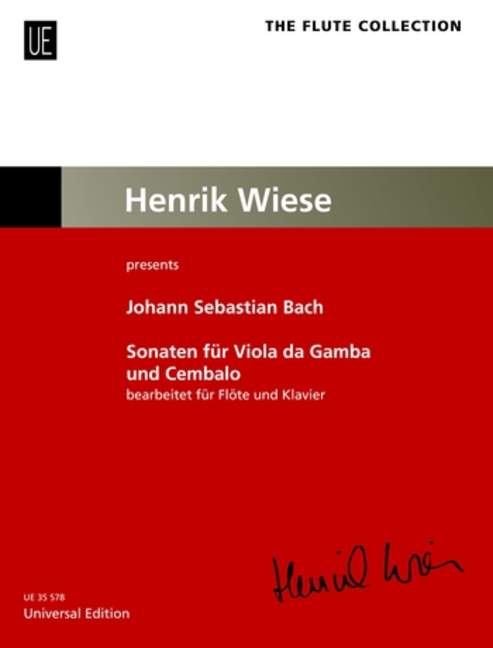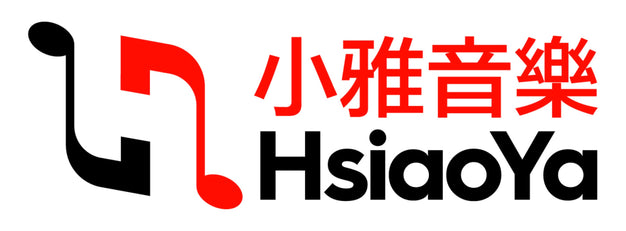
Sonatas for Viola da Gamba and Harpsichord Henrik Wiese presents 巴赫約翰‧瑟巴斯提安 鋼琴三重奏 奏鳴曲古提琴大鍵琴 環球版
將三首岡巴奏鳴曲 BWV 1027 - 1029 編曲改編為長笛和大鍵琴或鋼琴伴奏,初看起來似乎相當大膽。巴赫在這些奏鳴曲中使用的中提琴的三個八度音域(B-e flat2)及其低音域與巴羅克橫笛的音域(d1-e3)截然不同。然而,巴赫的 G 大調中提琴與大鍵琴伴奏奏鳴曲 BWV 1027 卻將中提琴與長笛文學聯繫在一起。此外,還有一首雙長笛與低音連奏三重奏奏鳴曲 BWV 1039。第一長笛聲部與甘巴奏鳴曲中的大鍵琴右手相對應。第二長笛聲部在甘巴上的音低八度。在本版本中,所有三首岡巴奏鳴曲都是根據這一歷史記載的聲部交換和八度轉調原則編排的長笛和大鍵琴伴奏。唯一的例外是 BWV 1029 中 g 小調奏鳴曲的副歌。在這裡,我們省去了聲部交換,以減少音樂文本的變化。這三首樂曲都是為歷史悠久的樂器編配的。我們嚴格遵守橫笛和巴赫大鍵琴的音域。對於現代伯姆長笛能讓演奏更接近原作的段落,我們用小號字體印出了備選曲目。長笛部分的音域有限,因此也適合用雙簧管或小提琴演奏。本改編版以 BWV 1027-1029 號岡巴奏鳴曲和 BWV 10391 號雙長笛與低音連奏三重奏奏鳴曲的歷史資料為基礎。對於 BWV 1027/1039 奏鳴曲的編曲,則首選三重奏奏鳴曲版本。只有在第三樂章(Adagio)中才使用了甘巴奏鳴曲中的低音提琴聲部,以避免在大鍵琴上出現三重奏奏鳴曲中音色較弱的重複。歷史資料中的錯誤和不完善之處已得到更正,不再贅述。不過,在本版本中,我們決定不對長笛和大鍵琴部分之間或平行段落之間的演奏標記和裝飾音進行統一。主要的資料來源都是複製品,完全不清楚其中的演奏標記和裝飾音在多大程度上可以追溯到巴赫。可能的調整不一定是增添--按照慣例,也可能涉及刪除或更正。這意味著有許多可能的、同樣有效的解決方案,此類藝術決定應留給演奏者。亨利克-維澤(2012 年 8 月,慕尼克)入圍美國國家長笛協會新出版音樂獎"
作曲家: Bach Johann Sebastian
校訂者: Wiese, Henrik
樂器: flute (transverse flute, oboe or violin) and piano (harpsichord)
出版社: Universal Edition
曲目:
Sonata (G-Dur, BWV 1027/1039) · Sonata (D-Dur, BWV 1028) · Sonata (g-Moll, BWV 1029
原文簡介:
Arranging the three gamba sonatas BWV 1027 – 1029 for flute and obbligato harpsichord or piano may at first seem rather daring. The three-octave range of the viola da gamba (B – e flat2) that Bach used in these sonatas along with its low register are quite different from that of the baroque tranverse flute (d1 – e3). Yet Bach’s Sonata for viola da gamba and obbligato harpsichord in G-major BWV 1027 links the gamba and flute literature. It also exists as a Trio Sonata for two flutes and basso continuo BWV 1039. The first flute part corresponds to the right hand of the harpsichord in the gamba sonata. The second flute part sounds an octave lower on the gamba. In the present edition all three gamba sonatas have been arranged for flute and obbligato harpsichord according to this historically documented principle of voice exchange and octave transposition. The only exception is the Adagio from the Sonata in g-minor BWV 1029. Here we dispensed with voice exchange so as to reduce the number of changes in the musical text. All three arrangements are intended for historical instruments. The ranges of the tranverse flute and of Bach’s harpsichord have been strictly observed. Alternatives printed in small font are included for those passages where the modern Böhm flute allows one to play closer to the original. The limited range of the flute part means it is also suitable for performance on the oboe or violin. The present arrangement edition is based on historical sources for the gamba sonatas BWV 1027–1029 and the Trio Sonata for two flutes and basso continuo BWV 1039 1. For the arrangement of the Sonata BWV 1027/1039 the Trio Sonata version was preferred. Only in the third movement (Adagio) was the basso voice from the gamba sonata used so as to avoid the repetitions of the trio sonata that are less sonorous on the harpsichord. Errors and imperfections in the historical sources have been corrected without further comment. In the present edition we decided, however, against the consistent alignment of the performance markings and ornamentation between the flute and harpsichord parts or between parallel passages. The principal sources are all copies and it is totally unclear to what extent the performance markings and ornamentation they include can be traced back to Bach. Possible adjustments need not be additions – as is customary – but can also involve deletions or corrections. This means that there are many possible and equally valid solutions and such artistic decisions should be left to the performer. Henrik Wiese (Munich, August 2012) Finalist "Newly Published Music Award" of "The National Flute Association (U.S.A)
難度: intermediate - easy
